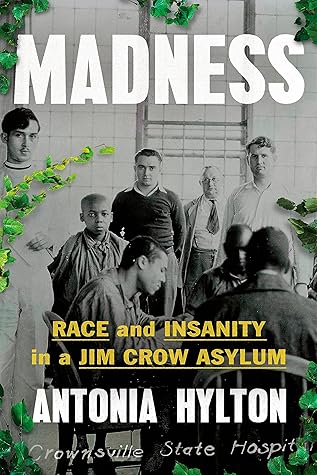More on this book
Community
Kindle Notes & Highlights
media emphasized stories of escapes and riots at Crownsville, and subtle differences in word choice suggested that while residents may have expected the institution to manage aggressive Black patients, they anticipated the rehabilitation of white patients. By the late 1940s, stories about violent escapes, aggressive Black men, and the anxieties of white residents were becoming routine. The press started advancing a narrative: Black patients at Crownsville, often painted as uniquely violent and disgusting, were to remain under increased supervision. Even as white patients deserved sympathy and
...more
The superintendent tried, once again, to explain that the root of the hospital’s troubles was in the absence of an adequate staff to oversee the patient population rather than in having too few locks and bars on windows. That the hospital had 2,300 patients—1,100 more than it had space for. But instead of spending money on therapy, employee salaries, or the reduction of overcrowding, the state spent money on new tools for imprisonment—tools that they knew weren’t actually going to work.
Instead she tried to shrink away and out of sight. She stopped raising her hand to answer questions, hoping the teacher might forget she was there. The confident, sassy, athletic girl grew quiet. Her grades started to slip, and she didn’t have the energy to do her homework. At home, she’d steal money out of her mom’s purse. It got harder and harder to bottle up what was boiling inside. When her classmates made fun of her, she started to shove back. Her teacher and her classmates were no longer impressed—now Faye was an aggressor.
In 1952, she returned to the start of a coup: U.S.-backed dictator, military sergeant, and former president Fulgencio Batista refused to lose an election and installed himself as the nation’s leader once again. This time, he came back ruthless. He crushed, tortured, and jailed his enemies, censored the schools and the press, and allowed for rampant privatization and de facto segregation to disenfranchise Afro-Cubans en masse.
children whose pain had manifested as isolation, irritability, anger, exhaustion, self-hatred. To him, there was no doubt John needed someone to help lift him out of the fog.
When he looks back, he realizes his grief had manifested as anger.


